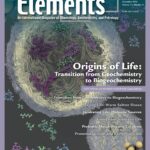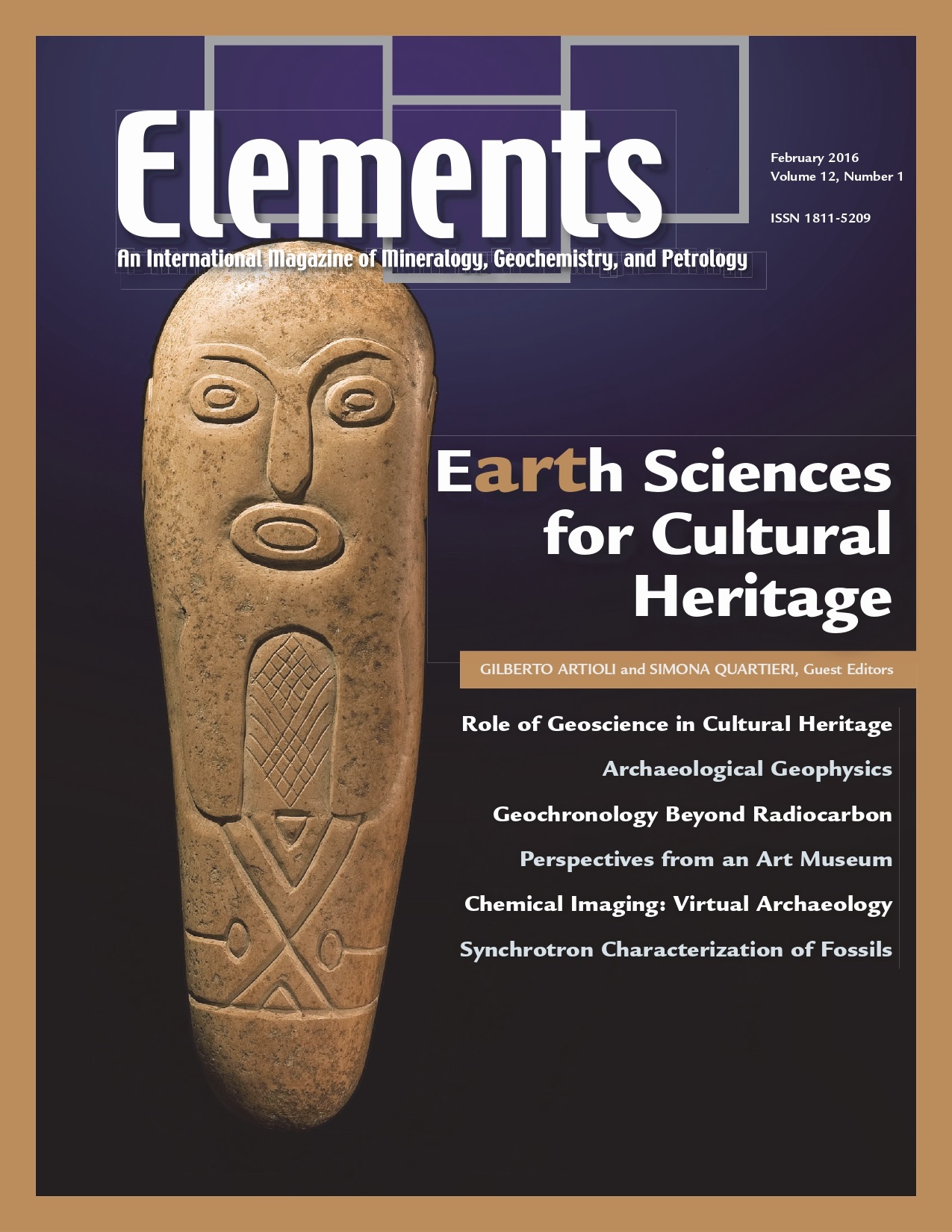
Geomicrobiology And Microbial Geochemistry, December 2015, Vol. 11, No. 6
June 28, 2024
Origins Of Life: Transition From Geochemistry To Biogeochemistry, December 2016, Vol. 12, No. 6
June 28, 2024Earth Sciences For Cultural Heritage, February 2016, Vol. 12, No. 1
$20.00
Archaeometry and conservation science are connected to the geosciences in three ways. Earth scientists can perceive the complexity of natural materials and of the artifacts produced by human activities, they understand the geological and physico-chemical processes acting on them, and they have a mastery of the techniques used to investigate heritage materials at different scales.
Earth Sciences For Cultural Heritage
February 2016, Vol. 12, No. 1
Archaeometry and conservation science are connected to the geosciences in three ways. Earth scientists can perceive the complexity of natural materials and of the artifacts produced by human activities, they understand the geological and physico-chemical processes acting on them, and they have a mastery of the techniques used to investigate heritage materials at different scales. Many techniques can be applied non-invasively, preserving the integrity of art/archaeological objects that are often characterized by uniqueness, fragility, high complexity, and heterogeneity. The goal is to understand the fine interplay between human activities, georesources, and natural processes: in short, the history of mankind and human societies on Earth. This issue uses selected examples to demonstrate how the geosciences offer a way to better understand, interpret, and preserve our past.
Why You’ll Love Elements Magazine:
- Expert Contributors: Articles written by renowned researchers in the field of geoscience.
- Engaging Content: Join a community of readers who are passionate about Elements.
- Exceptional Quality: Each issue is printed on high-quality paper with stunning visuals and detailed illustrations that bring complex scientific concepts to life.
Order your copy of the February 2016 issue of Elements magazine today and explore earth sciences for cultural heritage.
Related products
-
Supervolcanoes, February 2008, Vol. 4, No. 1
$20.00Explosive super-eruptions from large volume, shallow magma systems lead to enormous and devastating pyroclastic flows, the formation of gigantic collapse calderas, and deposition of volcanic ash over continent-sized areas. Recognition that future eruptions from these “supervolcanoes” will undoubtedly have severe impacts on society—and perhaps on life itself—has led to recent public and media interest.
-
On The Cutting Edge: Teaching Mineralogy, Petrology, And Geochemistry, April 2007, Vol. 3, No. 2
$20.00New advances in research on learning have important implications for teaching mineralogy, petrology, and geochemistry. Effective instructional practices are increasingly student centered, address diverse student learning styles, and employ a variety of active-learning strategies.
-
Deep Earth And Mineral Physics, June 2008, Vol. 4, No. 3
$20.00The field of high-pressure mineral physics is central to our understanding of the Earth’s interior and its evolution. It is also a field that is rapidly advancing.




